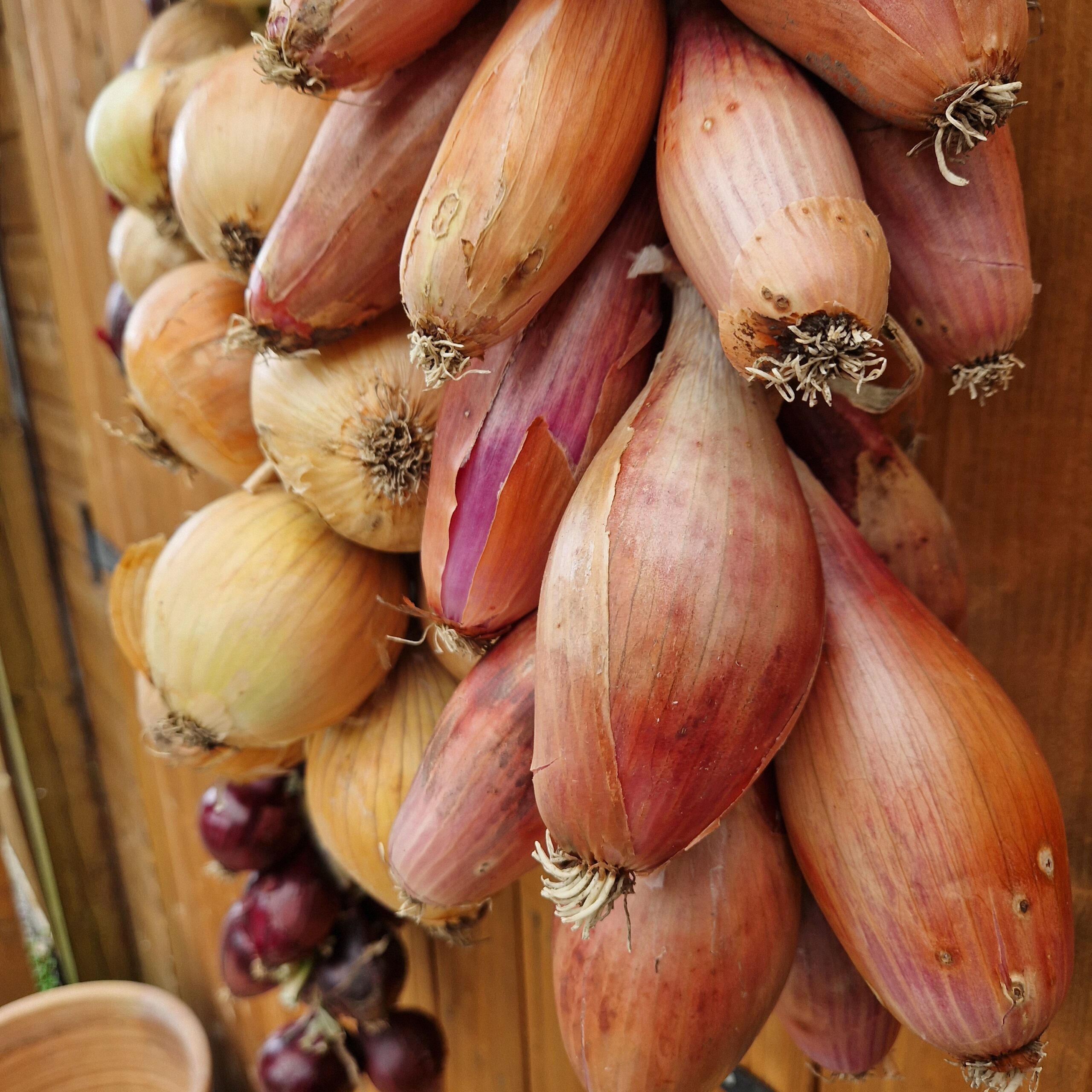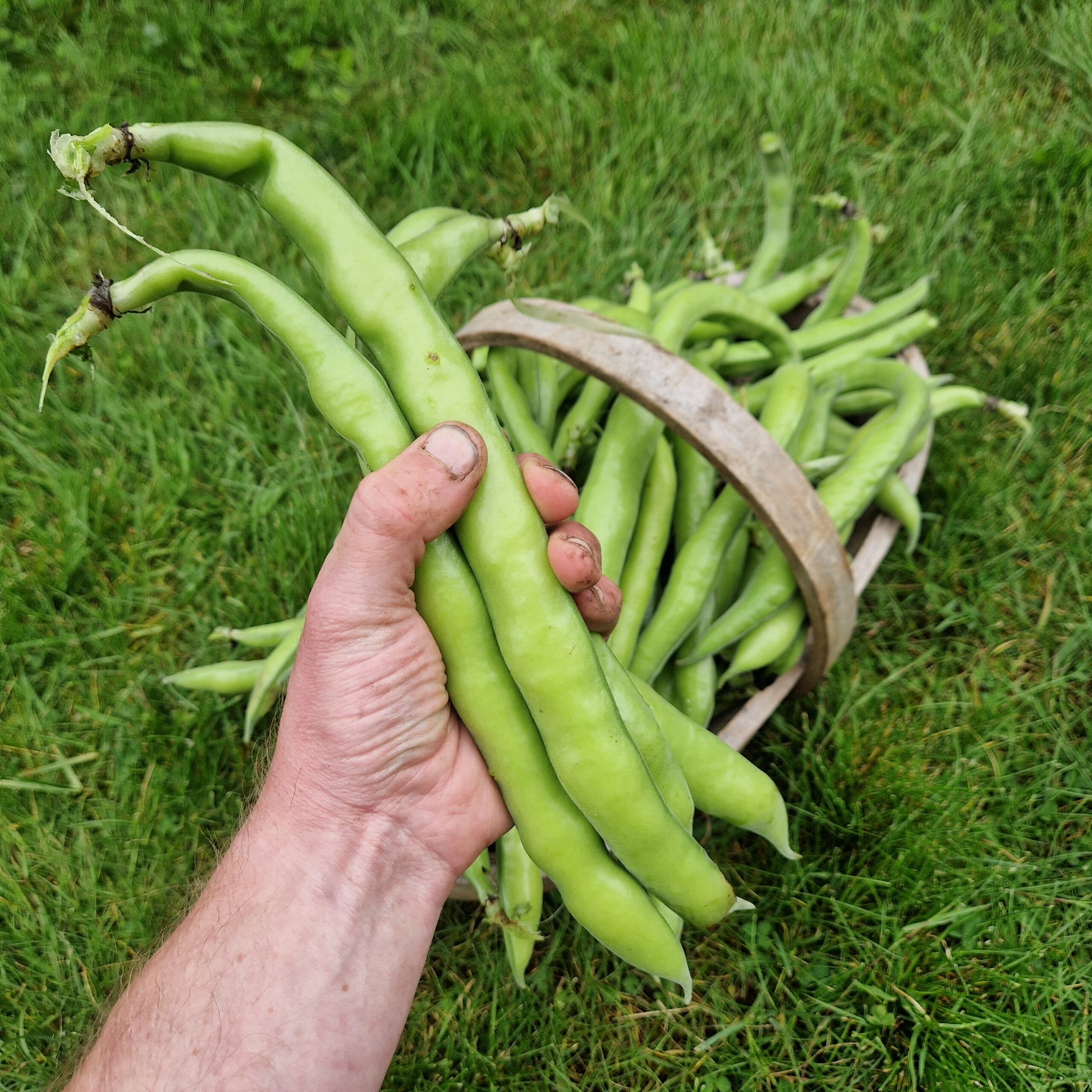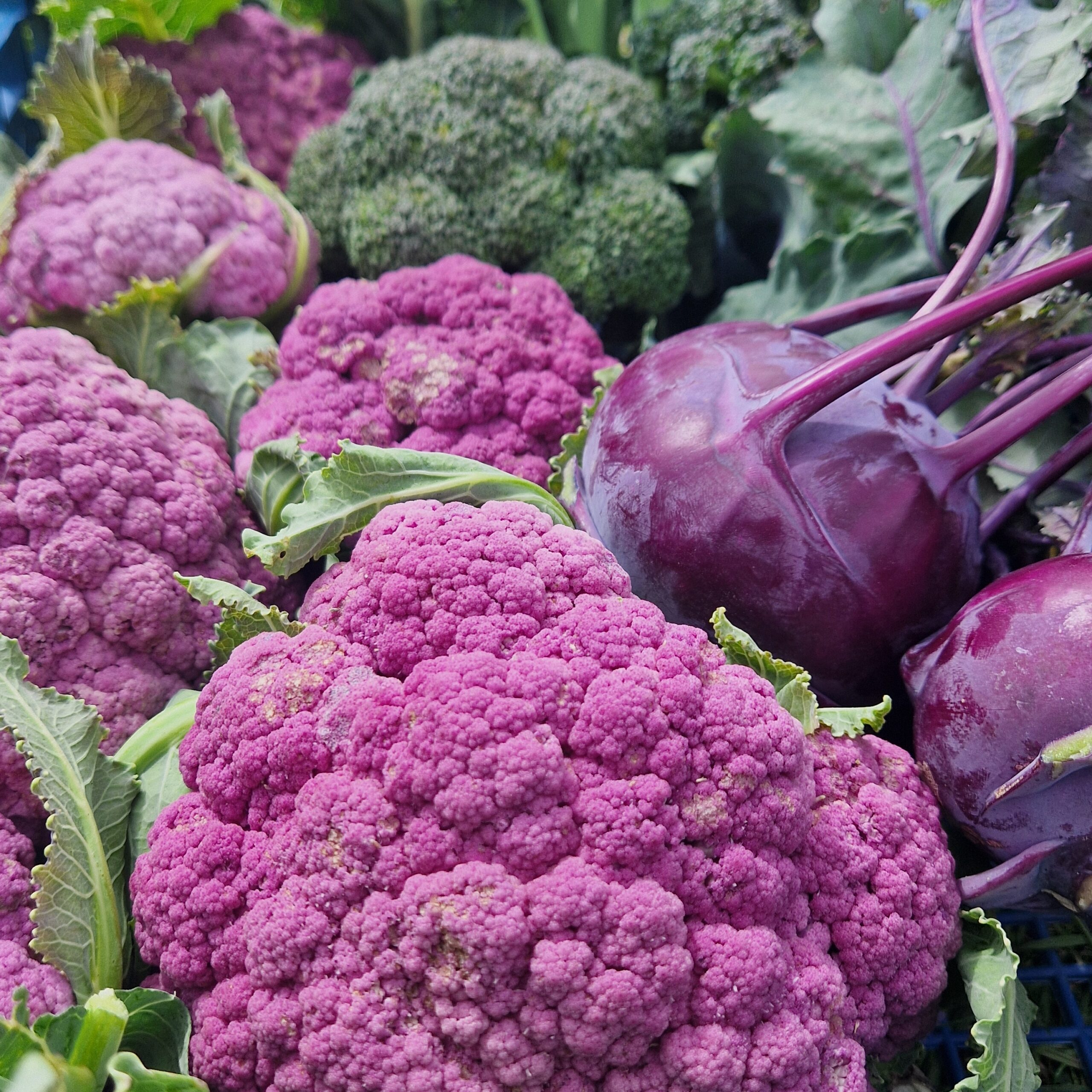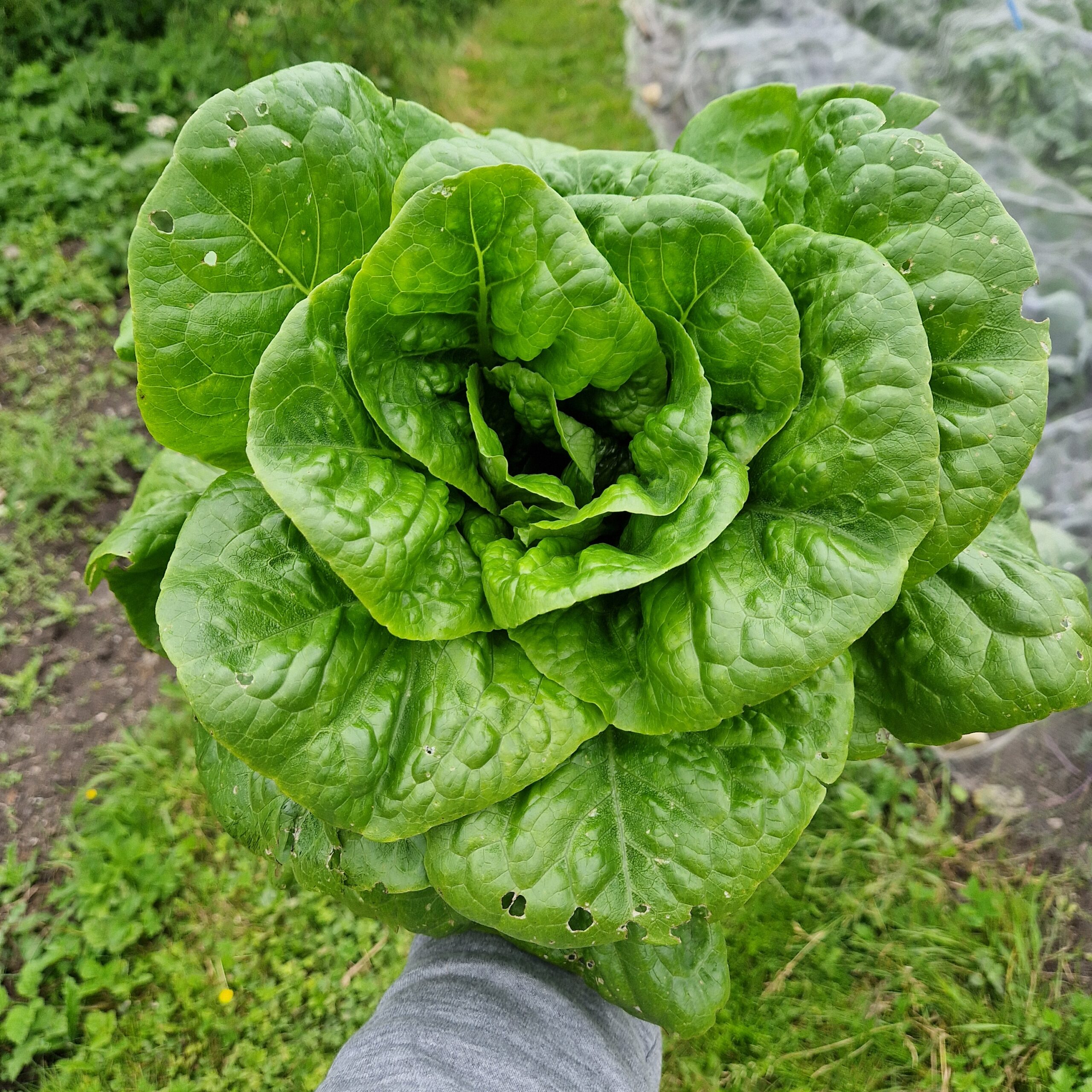Variety Notes
We have grown many varieties of vegetables and cut flower over the years, not always with great success! Below are some notes on those that have done particularly well for us in our chalky South Cambridgeshire soil – they’ve performed well, taste great and earned a regular spot in our seed box.

Alliums
Onions
Ailsa Craig
A reliable old favourite introduced as far back as 1887, produces large bulbs that have a straw coloured skin and a mild flavour. Not the longest storer, but with care keeps firm well into the new year. Single plants spaced 20cm apart to produce large bulbs of 500g or more, multisowing 4 seeds per module and planting them out as groups spaced 30cm apart will still produce
decent sized bulbs of around 400g, and you can fit more of them into the same bed space
North Holland Blood Red
An heirloom, dual use onion with a vibrant red colour that can be used for both spring onions or medium
sized bulb onions. For bulbs, we multisow 4 seeds per module and for spring onions we up to 10 per module and plant them out as a clump
Shallots
Zebrune
An heirloom variety introduced prior to 1944, this is a banana-type shallot that also goes by other names, including Cuisse de Poulet du Poitou. Once you’ve grown this it will
be the only shallot you’ll ever want to grow again! The large, pink-tinged bulbs are of the finest flavour we have found.

Legumes
Broad Beans
Aquadulce Claudia
The quintissential hardy broad bean for overwintering. Produces a very early crop of large, white beans with a good flavour. We usually start picking them the second week of May, signalling the end of the hungry gap and the start of the summer season!
Crimson Flour’d
An heirloom variety dating to the 1700’s, Crimson Flour’d was almost lost as a variety until being revived in the 1970s. Notable for its attractive scarlet flowers, the variety also crops well, with a good flavour
Sutton Dwarf
Dwarf heirloom variety introduced in 1923. Best sown in spring, can be overwinter if kept cloched or fleeced. High yielding and the white beans are good for filling the freezer, but there are better flavoured options.
Witkiem
Medium height variety suitable for spring sowing. Hardy and early maturing, so useful for both very early sowings and later sowings up the end of April. Produces average yields of white seeded beans that have the best flavour we have found.
Peas
Epicure
An heirloom variety, we sourced the seed from the Heritage Seed Library and now save our own each year. A tall pea needing a frame to climb up, large peas with an excellent flavour.
Glory of Devon
Another heirloom variety originally sourced the seed from the Heritage Seed Library, this is our favourite and one we always make sure to save seed from each year. A tall pea needing a frame to climb up, the peas are not as large as Epicure but the flavour is even better.
Shiraz
A modern open pollinated mangetout variety. British-bred in the early 2000s, the
attractive bicoloured flowers develop into deep purple coloured flat pods that. As with all purple vegetables, the colour is due to a high level of anthocyanin pigment which has healthy antioxidant properties. Short growing and easy to manage, only reaching a metre or so but best supported with a frame.
Brassicas
Brussels Sprouts
Clodius F1
Vigorous F1 variety producing a good crop of medium sized, dense buttons with a mild, sweet flavour. Very little blowing.
Darkmar 21
An heirloom variety producing a good crop of sprouts that don’t seem to be as sucesptible to blowing as other open pollinated varieties. The buttons are larger than Clodius but less dense. Flavour is good, but let the frost get to them first as they’re more sulphurous than modern varieties, until cold winter temperatures trigger an increase of sugars in the plants.
Cabbages
Mammoth Red Rock
Reliable heirloom variety dating to the mid 1800s. Produces very large, dense red cabbages with great flavour. Works well alongside Red Rookie as it matures later from the same planting date.
Red Rookie F1
Vigorous and early maturing F1 variety producing medium to large sized, dense red cabbages. Marketed as ‘the earliest red cabbage’, we usually harvest from early July (from transplanting mid-April). The plants stand well in the beds too so can be harvested over a long period. We like to harvest them small and early, growing the slower maturing Mammoth Red Rock alongside for larger cabbages.
Calabrese
Green Magic F1
Calabrese. Vigorous F1 variety, producing a very early medium sized, loose-ish head followed by lots of smaller shoots. We like to grow this alongside Stromboli which produces a denser head but fewer follow on shoots.
Stromboli F1
Calabrese. Vigorous and early maturing F1 variety, producing a large, dense head. Does produce follow on shoots if the plant is left in the ground but we prefer to plant a second crop of Stromboli for dense heads and grow Green Magic alongside it for an ongoing supply of shoots.
Cauliflower
De Purple F1
Vigorous, fast maturing F1 variety producing a good yield of large dense, purple curds with a good, delicately violet flavour. Useful for successional sowings.
Igloo
Fast maturing summer variety suitable for sowing early in spring. We like to sow them in February and plant them out tightly spaced (as close as 30cm apart each way) so that they produce a quick crop of small, dense white curds.


Lettuce
All-The-Year-Round
Introduced in 1829, this reliable and delicious butterhead type remains a standard of seed catalogues, vegetable gardens and allotments for good reason. As with spring onions, we like to have a tray on hand throughout the spring to plant out around slower growing crops both in the outside beds and in the polytunnel. Re-sow every three weeks or so and you’ll have a steady supply even through the summer when other lettuce varieties can struggle with the heat.
Marvel of Four Seasons
An heirloom butterhead type dating to 1885, with attractive wavy red and green leaves that look great in a salad and taste great too. Suitable for sowing in spring as well as in autumn for overwintering, if grown under cover.
